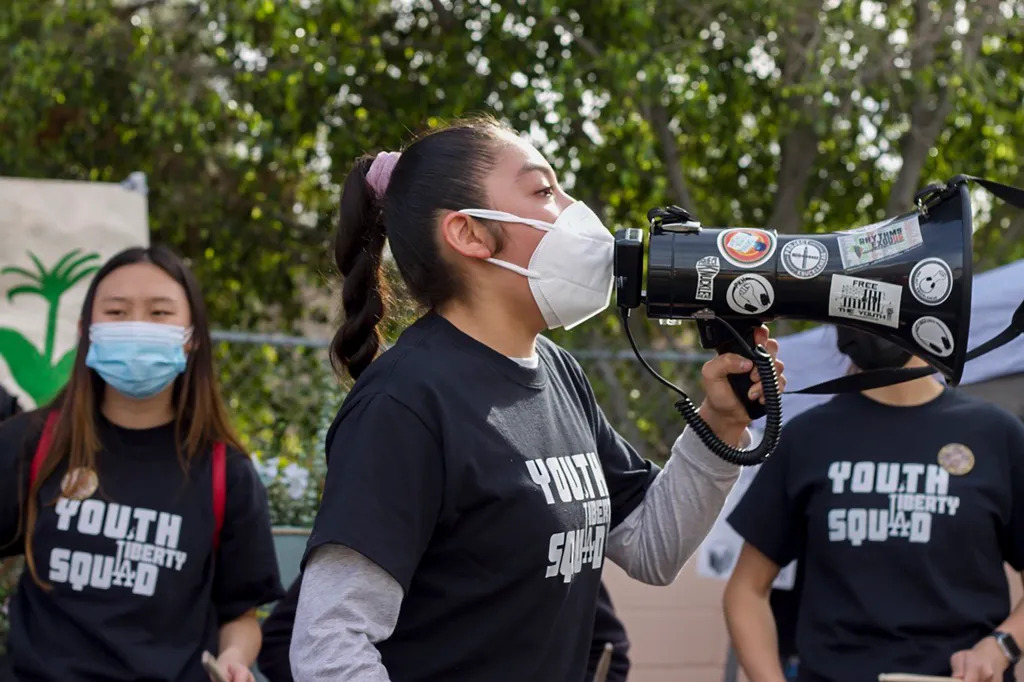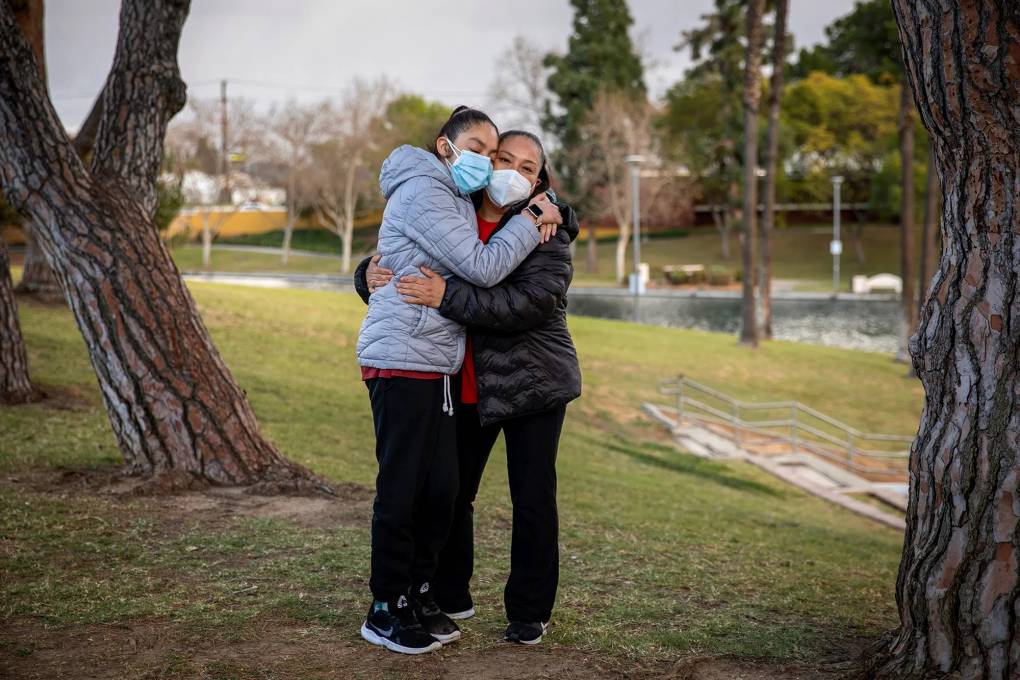California will pump billions into mental health resources for young people. But will he come soon enough?
Los Angeles senior Joel Salas spent a month in isolation in his bedroom after the rest of his family contracted COVID-19. His mother became extremely ill, and he ended up caring for her while studying and working five or six hours a day at his parents’ taco stand.
One of the biggest challenges for him now is the relentless uncertainty.
“You don’t know what happens next,” he said. “You don’t want to hope, because another wave could come.”
Another challenge is what is not said. Many of his classmates have lost family members, he said. People rarely talk about it.
Amanda, who is also a leader of the Youth Liberty Squad, felt terrified when school resumed in person last August. What would happen if she was exposed to the virus? To protect herself physically, she distanced herself from her classmates.
Amanda’s mother, Maria, understands these fears. She also knows that a teenager needs friends.
Labor shortages mean long waits for care
The trauma of the pandemic – grief, fear, loneliness and boredom – adds to concerns about food and housing insecurity, gun violence, climate change, political polarization, racism, transphobia , deportation and, now, the war in Ukraine.
One in 330 California children have lost a parent or caregiver to the pandemic, according to a December report by COVID Collaborative.
Counselors working in schools say more and more students are taking action. Some children have trouble getting out of bed.
Josh Leonard, executive director of the East Bay Agency for Children, which provides mental health services to children, calls it “a natural and predictable response to stress and anxiety in the moment”.
“Children are in deep trouble,” he said.
But large systems are not nimble enough to cope with the growing urgency, he said. As waiting lists grow, workers at overwhelmed schools and mental health agencies like his don’t always reach out proactively to children and families, he said. Why bring children into the system when no one is available to serve them?
Alyssa Hurtado, a social worker with Leonard’s agency who works at a Newark elementary school, did her best to stay in touch with families during the school closure. After more than a year of distance learning, many of her young clients are now struggling with separation anxiety. Others have difficulty with motivation and concentration.
“Kind of like, ‘What’s the point?'” she said.
Hurtado herself is stretched. Five children are on a waiting list for services at her school. In the meantime, she also helped fill a vacancy at another school.
Across the agency, Leonard says, 10 therapy positions remain vacant out of a total of 50. Each of those positions would allow the organization to see an additional 18 to 20 children. He and other nonprofit leaders say it’s hard to compete with counties, school districts and big fish like Kaiser. The telehealth companies that have sprung up during the pandemic have attracted some clinicians. Others opt for the flexibility of working for themselves, avoiding onerous paperwork by seeing patients who can pay out of pocket. Still others move to places where the cost of living is lower.
Those who stay often carry the extra load and face burnout.
“Each applicant currently has 20 different job opportunities,” said Stacey Katz, CEO of WestCoast Children’s Clinic in Alameda County, which is also trying to fill 15 to 20 positions.
“Nobody likes you saying you have a ‘waiting list,'” she said, describing the pressure she and others say they receive from counties to avoid using that term. “I don’t know what you call it when there are 176 people waiting for services.”
The clinic’s director of public policy, Jodie Langs, added: “If we call this a mental health crisis, let’s respond to it as a crisis.
Hope on the horizon?
Fans recognize the tension of this moment. They salute the leadership of the Newsom administration and its willingness to invest the state budget surplus in solutions. But they also say the state is playing catch-up, having failed for years to meet spiraling needs.
For many of these advocates – and for the families and children they serve – state promises are only worth the changes they see on the ground.
Alex Briscoe, director of the California Children’s Trust, an initiative to reform the state’s children’s mental health system, calls the state’s current leaders “extraordinary” and their investment “unprecedented.” But he also notes that California has “one of the worst records in the country” when it comes to child mental health.
A 2018 Commonwealth Fund report places the state 48th out of 50 in terms of the percentage of children ages 3 to 17 who received needed mental health care. A 2020 progress report released by Children Now just before the first shutdown gave the state a D grade for children’s behavioral health, noting that mental illness was the top reason children here were hospitalized. The 2022 report gave the state a D-plus.
“I don’t mean to suggest that nothing happens, but it’s not yet clear what that will mean,” Briscoe said.

Ghaly and other members of the administration say they are working hard to develop a strategy. They aim to create an integrated system that focuses on prevention and equity and brings together public, commercial and private systems that are often siloed and highly fragmented – “something with lots of entry points, lots of doors entrance,” Ghaly said.
“The truth is, we don’t really have a cohesive behavioral health system for children,” he said. “I see a lot of opportunities to put something together.”
The administration is still mostly in the first phase of a three-phase plan it plans to roll out over five years. Heads of state bring stakeholders together, set goals and identify overall issues. Over the next few years, they plan to translate this into major initiatives, including a virtual mental health platform that would be accessible to all young people. They are also considering a public awareness campaign to combat stigma; a school-based treatment model that will be available regardless of insurance status; and training a larger and more diverse workforce.
The state has so far rolled out CalHOPE, an online platform that offers mental health support. It also formed a partnership with the Child Mind Institute to provide mental health education materials and allocated new funds to support school-county partnerships. And, as part of a statewide effort to transform Medi-Cal, the health insurance program for low-income Californians, state officials recently announced that children and young people do not need a diagnosis to access specialized mental health services.


Comments are closed.